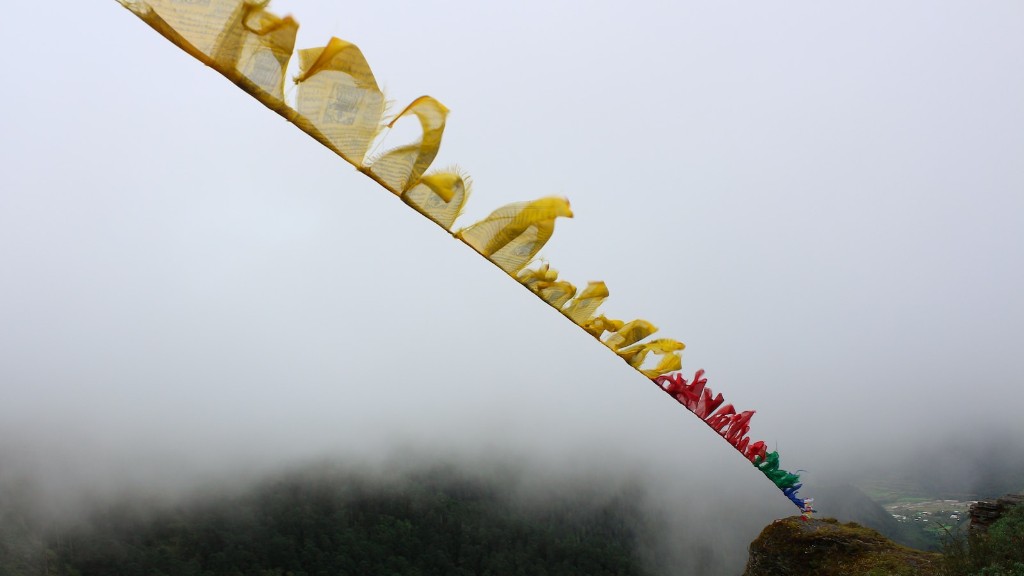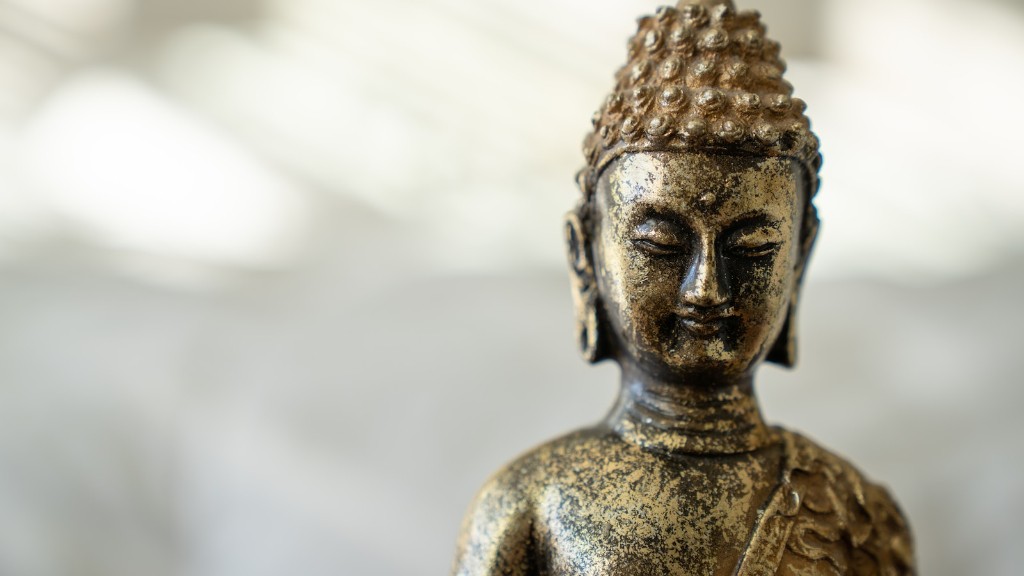Kadampa Buddhism is a form of Mahayana Buddhism that stresses the study and practice of the Buddha’s teachings, or Dharma. The Kadampa tradition was founded by the great Indian Buddhist Master Atisha (982-1054 CE) and later propagated in Tibet by his main disciples Dromtönpa (1005-1064 CE) and Potowa (d. 1087 CE). The Kadampa teachings and practices emphasize the importance of individual choice, responsibility and self-discipline in the spiritual life.
Kadampa Buddhism is a school of Mahayana Buddhism founded by the great Indian Buddhist Master Atisha (982-1052 CE). It is based on the wisdom of the Kadam teachings and stresses the importance of philosophers and Bodhisattvas.
What do Kadampa Buddhists believe?
The great Kadampa teachers were highly influential in the development of the Lojong practice, which emphasizes the transformation of daily life experiences into opportunities for spiritual growth. They placed particular emphasis on the practice of Training the Mind, which they saw as a key to unlocking the full potential of the human spirit. The Kadampa tradition continues to inspire and guide many people on the spiritual path today.
A Kadampa is someone who integrates Buddha’s teachings into their daily life. More specifically, Kadampa Buddhism is a special tradition of Mahayana Buddhism founded by the Venerable Atisha, an Indian Buddhist Master who revolutionized the way people practiced Buddhism in both India and Tibet in the 11th century.
What is the history of Kadampa Buddhism
New Kadampa Buddhism (NKT) is a Buddhist tradition founded in 1991 by Geshe Kelsang Gyatso in the United Kingdom. The NKT is an international organization with over 1,200 centers and branches in over 40 countries. The NKT is a member of the International Buddhist Confederation.
The NKT is based on the teachings of the Kadampa tradition of Tibetan Buddhism, which follows the moral precepts of Mahayana Buddhism and the spiritual practices of Vajrayana Buddhism. The NKT teaches that all beings have the potential to attain Buddhahood, and that the path to Buddhahood is through the practice of Dharma, or the teachings of the Buddha.
The NKT is a lay-led organization, and its members take lay vows to uphold the Five Precepts and to engage in the practice of Dharma. The NKT also ordains monks and nuns, who take monastic vows to uphold the Vinaya, or monastic code of conduct.
The NKT is committed to the preservation and dissemination of the Kadampa teachings, and to the promotion of religious tolerance and understanding. The NKT has been criticized by some Tibetan Buddhists for its focus on the teachings of the Gelugpa school of Tibetan
The Kadampa’s higher yoga tantra practice was based on Guhyasamaja and Chakrasamvara. Meanwhile, Tibetan sources mention that Atiśa’s main meditation deities were Śākyamuni, Avalokiteśvara, Acala, and Tārā.
Is Kadampa Mahayana Buddhism?
Kadampa Buddhism is a Mahayana Buddhist school founded by the great Indian Buddhist Master, Atisha (AD 982-1054). The Kadampa tradition follows the moral precepts and engaging in the practices of the Bodhisattva to develop the mind of bodhichitta. The ultimate goal of the Kadampa is to attain full enlightenment for the benefit of all sentient beings.
Dance is an important part of ritual in Sri Lanka. It is seen as a pure offering, just as flowers, food and incense are offerings. Monks are forbidden to dance in Theravada Buddhism, but ritual dance is still considered pure.
Who are the gurus of Kadampa lineage?
The New Kadampa lineage is a tradition of Tibetan Buddhism that was founded by Je Tsongkhapa in the 14th century. It is characterized by its emphasis on the study of the scriptures and on the practice of meditation. The tradition flourished for centuries, and its teachings were transmitted to the present day through a lineage of highly pure Gurus, such as Je Phabongkhapa and Vajradhara Trijang Rinpoche.
Gyatso is a Tibetan personal name meaning “ocean”. It is also written Rgya-mtsho in Wylie transliteration, Gyaco in Tibetan pinyin, Gyatsho in Tournadre Simplified Phonetic Transcription and Gyatso in THDL Simplified Phonetic Transcription.
What are the four types of Buddhism
Buddhism is a religion that teaches that everything is connected. This includes the belief in a wheel of rebirth into different bodies. This is connected to the idea of karma, which refers to how a person’s actions in the past can impact them in the future. There are three main schools of Buddhism: Mahayana, Theravada, and Vajrayana. Each of these schools has its own beliefs and practices.
Theravada Buddhism is the oldest form of Buddhism, and is associated with the Pali canon, the only complete Buddhist scripture that survives from the early Indian period. Theravada means “the way of the Elders” or “the Elderly School,” and was so called to distinguish it from the Mahayana, or “Greater Vehicle.” The Theravada tradition emphasizes individual liberation from suffering and the attainment of Nirvana through one’s own efforts. The Mahayana tradition, on the other hand, emphasizes the bodhisattva ideal of selfless service to others and the attainment of Buddhahood as the ultimate goal. Vajrayana, or “Diamond Vehicle,” Buddhism is an esoteric tradition that developed in India and Tibet. Vajrayana emphasizes the use of ritual and meditation to achieve the state of Buddhahood.
What is the oldest version of Buddhism?
The Theravada tradition is the oldest and most conservative of the three major Buddhist traditions. It is characterized by its belief in the literal truth of the Pali Canon, the oldest Buddhist scriptures, and its adherence to the monastic ideal of the forest monks.
Information technology (IT) is the application of computers and telecommunications equipment to store, retrieve, transmit and manipulate data, often in the context of a business or other enterprise.
What is modern Kadampa Buddhism
Modern Kadampa Buddhism is a special, practical presentation of Buddha’s teachings that is particularly suited to the modern day. It was introduced into contemporary society by the world-renowned meditation master and scholar Venerable Geshe Kelsang Gyatso Rinpoche.
The New Kadampa Tradition – International Kadampa Buddhist Union (NKT—IKBU) is a global Buddhist new religious movement founded by Kelsang Gyatso in England in 1991. The NKT is a controversial organization, and is accused by some Buddhists of being a cult. The NKT rejects these accusations, and insists that it is a legitimate tradition of Tibetan Buddhism.
Who is the highest god in Buddhism?
Mahābrahmā is one of the most important figures in Buddhist cosmology. He is the singular leading deity and the king of heavens Brahmā. Mahābrahmā is often considered to be the creator of the universe and the ultimate reality.
There are a few key differences between Theravada and Mahayana Buddhism. For one, Theravada is organized around the notion of breaking the cycle of Samsara and escaping reincarnation. Mahayana Buddhism, on the other hand, aims to achieve enlightenment through the teachings of the Buddha. However, they ultimately choose to stay in Samsara and reincarnate out of compassion for others.
Another difference between the two is that Theravada Buddhism relies heavily on the Pali Canon, while Mahayana Buddhism has developed a number of additional scriptures. Finally, Theravada is largely practiced in Southeast Asia, while Mahayana is more prevalent in East Asia.
Why is Mahayana Buddhism different
Buddhism is a religion that is based on the belief of reincarnation. This means that after someone dies, they are reborn into another body. The goal of Buddhism is to escape the cycle of rebirth and achieve nirvana. In the Mahayana tradition, the focus is on acquiring knowledge and wisdom, which is seen as the path to enlightenment.
Whereas Mahayana Buddhists prioritize universal compassion for all sentient beings, Christians instead focus on developing an individual relationship with God. Though both groups ultimately encourage love and care for others, the emphasis on who or what is deserving of that love differs.
Warp Up
Kadampa Buddhism is a form of Mahayana Buddhism founded by the great Indian Buddhist Master Atisha (982-1052 CE). It is based upon the teachings of the Buddha and the scriptures known as the Kadampa Teachings. The Kadampa tradition has always placed great emphasis on the importance of study and contemplation of the teachings, as well as on the need for a qualified teacher.
In conclusion, Kadampa Buddhism is a unique form of Buddhism that focuses on Inner Transformation. This type of Buddhism emphasizes on the study and practice of Buddha’s teachings in order to cleanse the mind of impure thoughts and emotions and to develop pure, positive states of mind. Through the practice of meditation and mindfulness, followers of Kadampa Buddhism hope to achieve inner peace and happiness.


